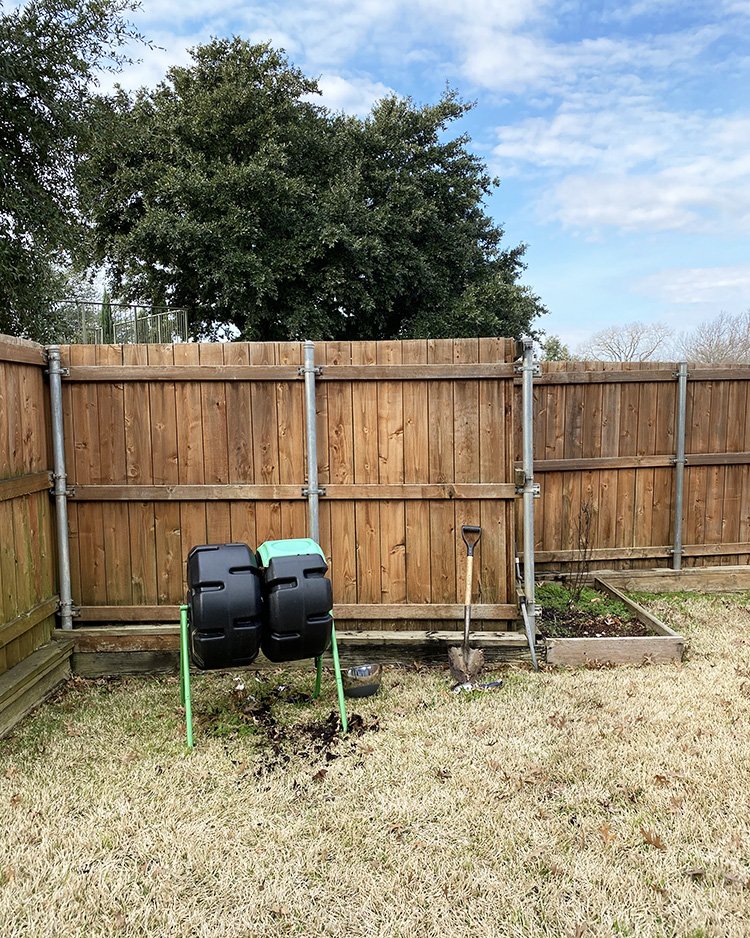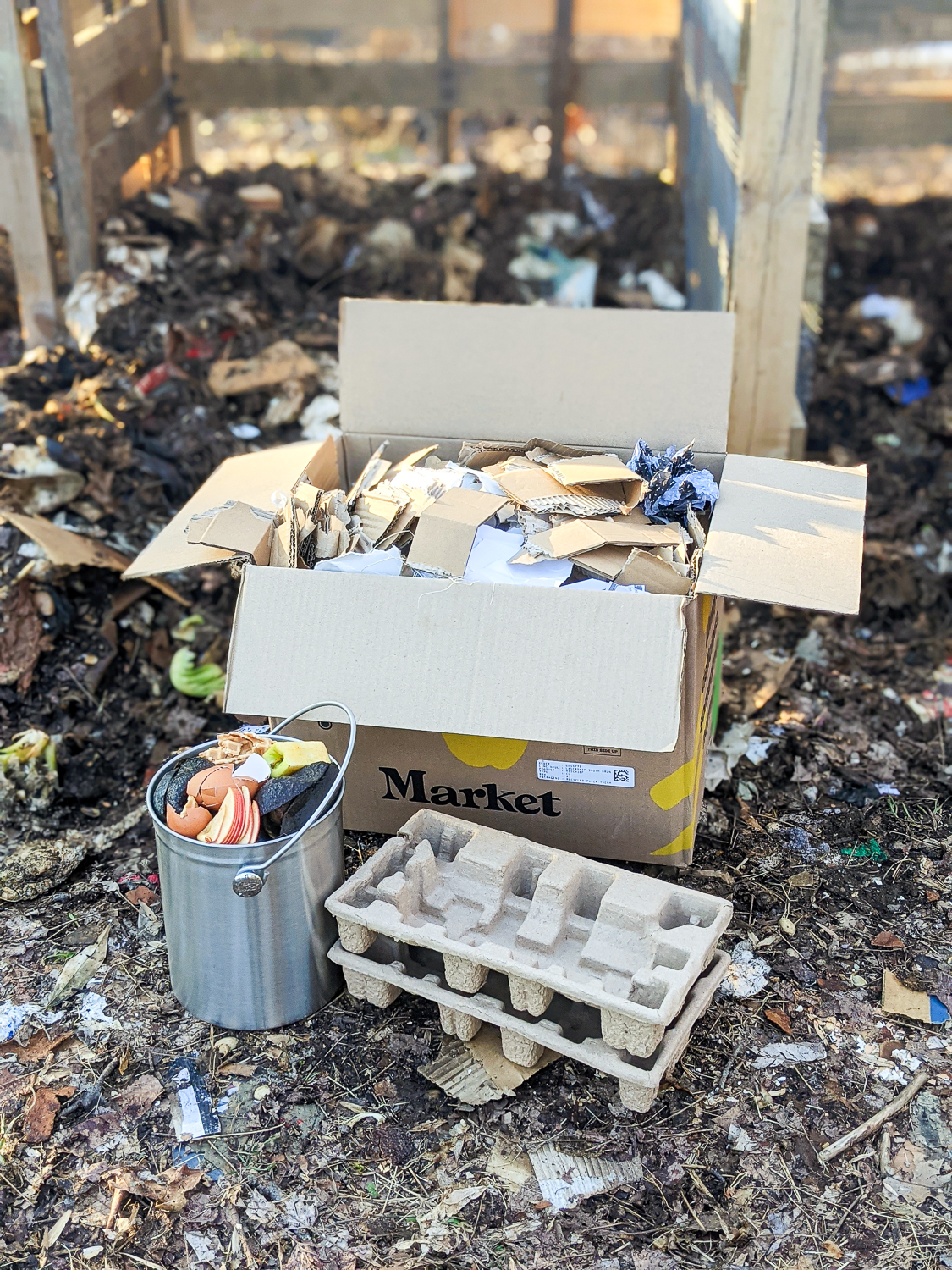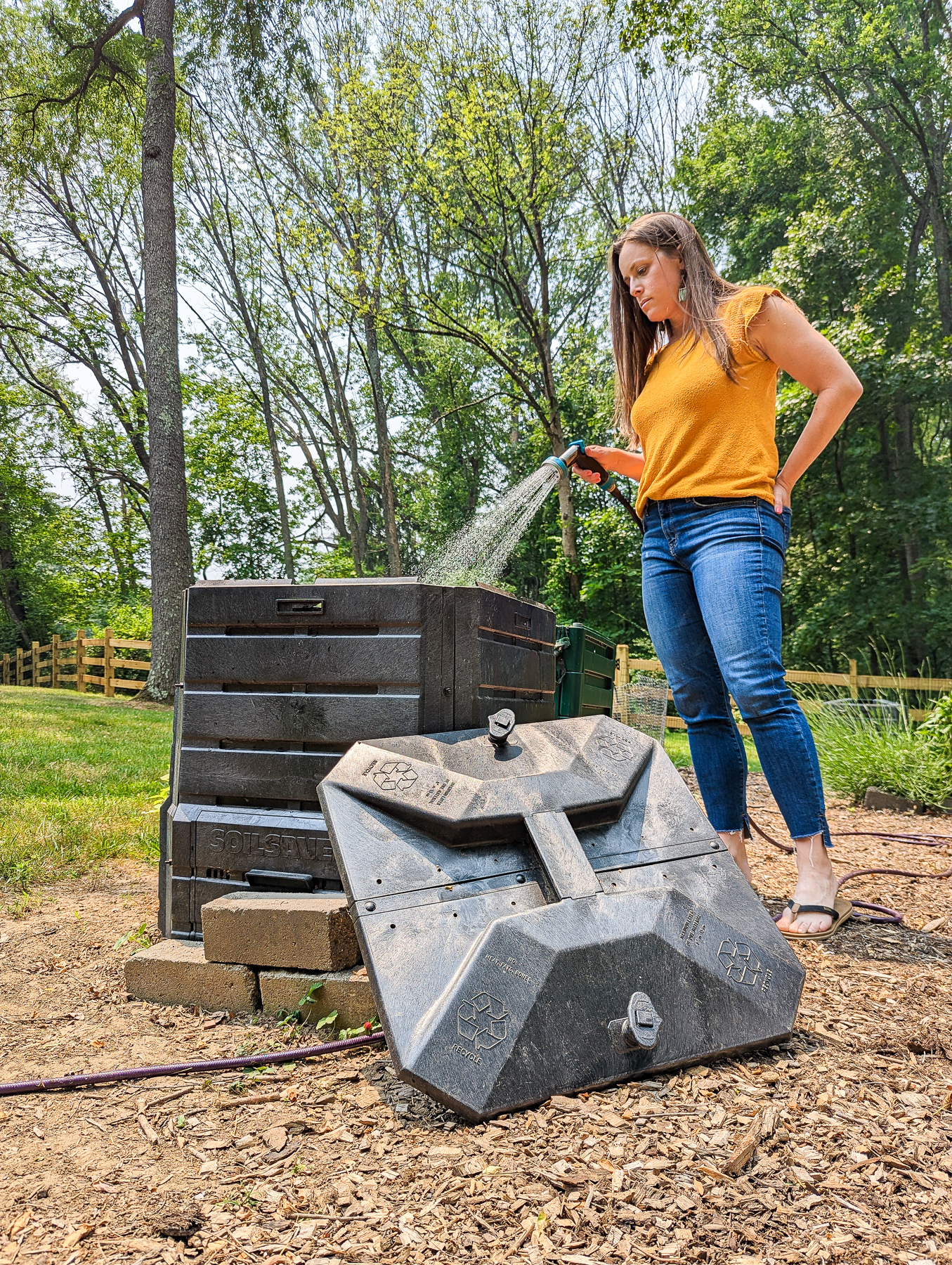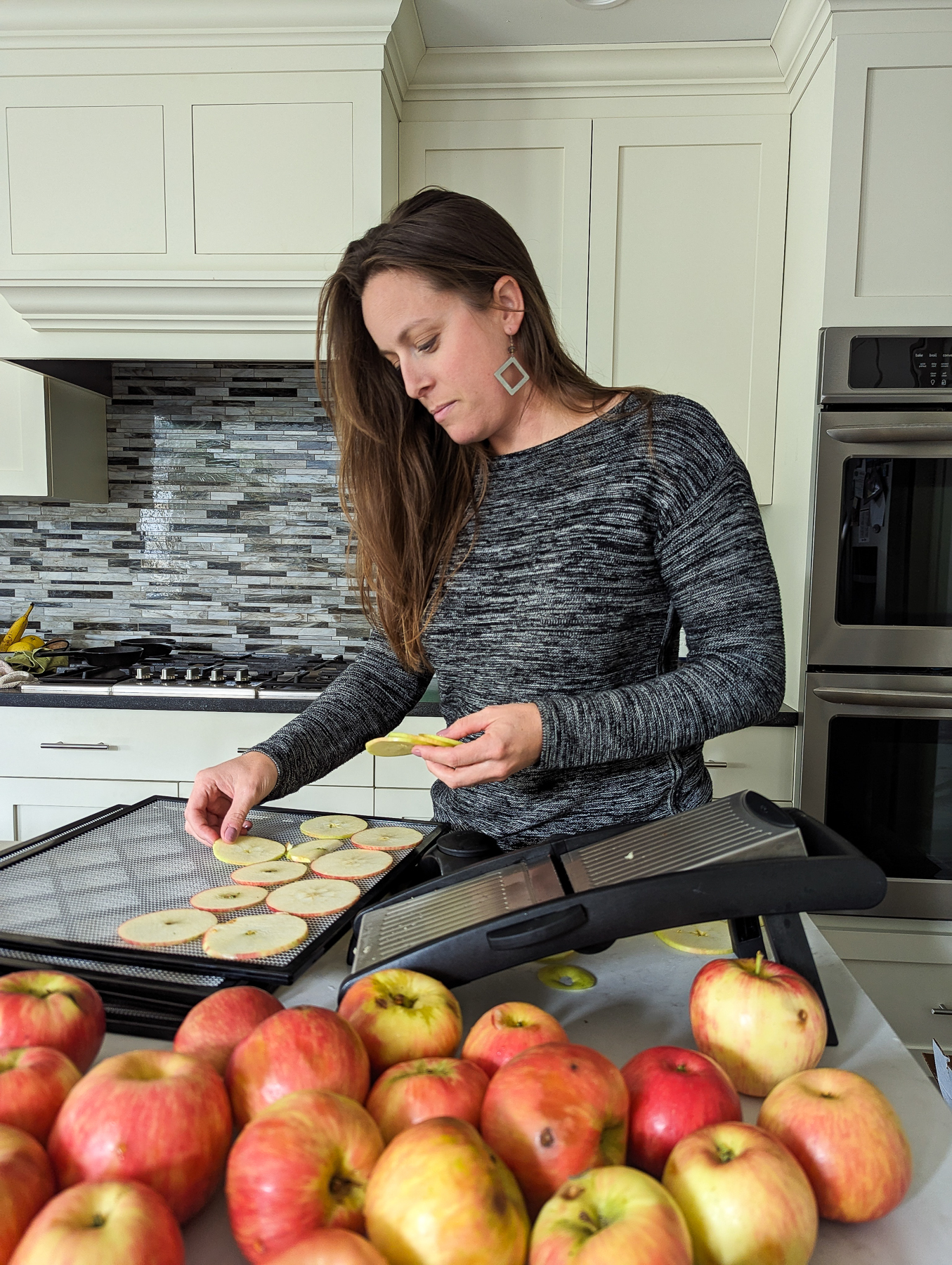Electric compost kitchen bins: More glorified trash compactor than food waste silver bullet
Interested in electric compost kitchen bins? Read on for some things to consider before investing in this expensive kitchen appliance.
Looking for a better electric compost bin? I’ve tried several electric kitchen bins, and this one is my favorite! Check it out.
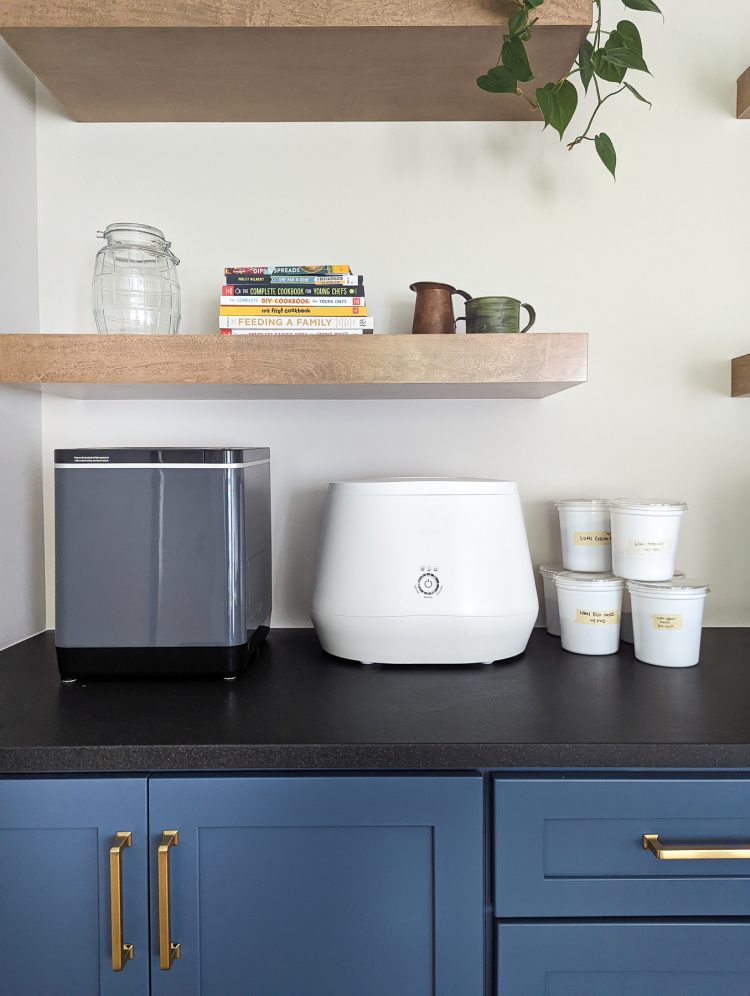
Note: I use the terms electric kitchen bin and electric compost kitchen bin interchangeably. These appliances go by a variety of names, including electric composters. But they don’t really compost. Call them what you wish.
What would the world look like with no food waste? I can’t even begin to imagine, and it’s not realistic anytime soon, but food waste is one of the most pressing environmental issues right now for a variety of reasons.
We need myriad solutions throughout the food supply chain tailored to many different communities and circumstances. I can’t enumerate (or even know) all the right solutions, but I can tell you one thing – no electric compost bin or kitchen bin will be the magic silver bullet.
Environmental consequences of food waste are vast and serious
The environmental consequences of food waste run rampant all along the supply chain. We waste resources growing, harvesting, and transporting food that doesn’t make it into our mouths (being lost at all points from the farm to the truck to the store to the table – and everywhere in between). Additionally, when food waste ends up in landfills, it doesn’t break down effectively. Instead, food waste releases large amounts of methane – a greenhouse gas – into the atmosphere.
Using food waste to feed people, animals, and soil
Meanwhile, we could use that food “waste” to feed our neighbors, feed animals, and rebuild our ailing soil. But we don’t do this nearly as much as we could, in part because building those new systems to fix our very broken food system is hard, expensive, and – most importantly – not that profitable. And in a uniquely capitalist country, it’s almost always about profit.
Some companies are building programs and tools that close the gaps in our food system where good food is otherwise lost to waste. Some of these methods are novel, and many are more like attempts through brute force.
By this, I mean teams of volunteers and do-gooders (some paid, some not) move food and food waste around in inefficient but eventually effective ways at low or non-existent profit margins with altruistic intentions. These options are great for now, even if unsustainable. I don’t want perfection to be the enemy of good.
But food waste is a matter of environmental and social justice. Finding and implementing solutions is necessary and urgent, and we need to put our investments of time, energy, and thoughtfulness into solutions that are scalable, sustainable, and accessible.
We need to invest in the best return on investment solutions, meaning the best bang for our buck in terms of environmental impact, not simply a maximum return to financial investors. Let’s talk about one solution that is not the best return on our environmental investment – electric compost bins (which don’t compost at all).
Electric compost kitchen bins are glorified trash compactors
In many ways, electric kitchen bins are glorified trash compactors, a fancy and luxurious kitchen amenity that’s been around for decades and has not yet made a dent in our waste or our waste habits. Admittedly, some of the electric kitchen bins use various types of bacteria and microorganisms to break down food scraps biologically, but I still don’t think these will be the future of residential food waste management.
Electric kitchen bins (or electric composters) market themselves as clean and convenient solutions to your worst food waste nightmares. Without much effort, you can stop throwing your food scraps into your trash can or down your garbage disposal and turn them into animal feed or soil nutrients instead. It sounds so simple.
But here’s the big problem not enough people are talking about. Electric compost bins are not a complete end-to-end solution. You still need a disposal option at the end. I’ve taken a deeper dive into this issue in a previous article where I discuss why most people can’t or won’t use the output from these machines.
And if you don’t use the output in your yard, garden, or homestead, then you still need some type of disposal process to keep the ground-up, dehydrated food remnants out of your trash can. You still need somewhere to drop off or someone to pick up this leftover waste.
In short, you’ve compacted your food waste into a small, drier version to put right into the same or similar waste cycle you already use. It’s a glorified trash compactor.
Some will argue that dehydrating and grinding the food scraps will make them lighter and easier to transport, even if they still require a trip to a processing facility (or heaven forbid, the landfill). Lighter and easier transport means less fuel, fewer trips to the landfill, etc…
But those same (or very similar) arguments can be made about trash compactors. History is a crystal clear indicator that trash compactors have solved nothing and are accessible and realistic for only the most affluent among us. Moreover, trash compactors don’t even require subscriptions or fancy apps.
These bins are for food waste what stand mixers are for baking
Here’s another analogy I think works for these machines. Electric kitchen bins contribute to home food waste management like electric stand mixers facilitate home baking. They’re relatively large, expensive kitchen appliances that both make a middle step in the process marginally easier. They’re both fun but not necessary to reach their respective end goals.
But just like electric stand mixers don’t turn everyone into home bakers, these machines won’t turn everyone into home composters, because they just don’t add enough convenience for their cost and effort. Stand mixers might help people who enjoy baking bake a little more often. They’re certainly fun to have. And some are really pretty kitchen accessories. I have a stand mixer, and I think it’s great!
But they aren’t so convenient and transformational that they will resonate with a large enough population of people and solve enough of the broken features of our food waste management system that they are worth massive climate dollars (private or public). I just think there are better, more effective ways to invest in reducing food waste than kitchen appliances.
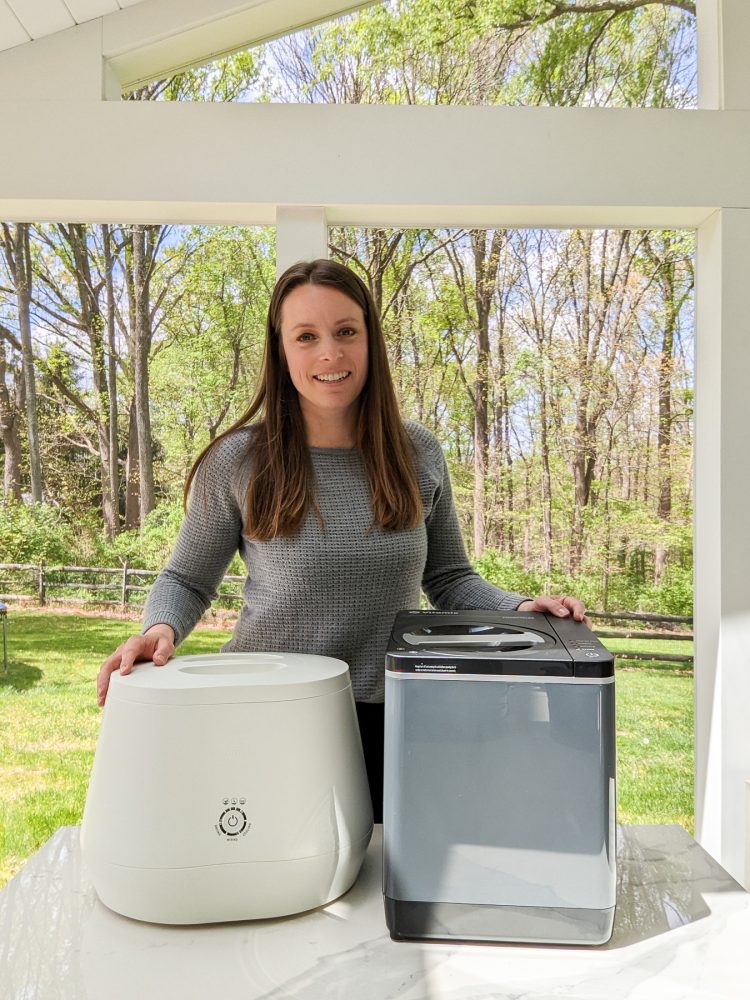
And about contamination?
One of the most difficult issues in terms of broad-based composting is that of contamination. Contamination in compost means the inclusion of anything in a compost pile that doesn’t compost (plastic, metal, glass, etc…).
Recycling rates and habits over the last many decades have proven that separating our recycling (even when it has associated markings on the package) isn’t successful. Contamination in our recycling bins is so rampant that it has a name – wishcycling.
When it comes to composting, where many products don’t have specific markings, contamination continues. It’s no surprise. It’s only going to get worse as we incorporate more bioplastics and mixed paper/plastic materials into our lives, blurring the lines between what is compostable and what is not.
As for the electric kitchen bins, they each have different rules about what can be processed in them. Sometimes that list varies depending on the processing cycle you choose. There are still some types of food waste that must go in your trash with each of them.
The separation process is as confusing, if not more confusing, than recycling or traditional green bin compost collection alternatives. And it seems (at least to me) a lot harder to sift out contamination after it’s been dehydrated and ground up before all that processing.
Now let’s circle back to trash compactors. Trash compactors didn’t help fix our waste problem, and they don’t even require manual separation. If a catch-all shrinking machine can’t fight our waste epidemic, how is a “catch-some-and-teach-people-how-to-separate-effectively” shrinking machine going to solve it?
But the kitchen bin output doesn’t go to our landfills
Some will rebut that trash compactors and electric kitchen bins aren’t the same because the output of compost kitchen bins doesn’t go to the landfill. The whole point is to divert it from landfills so it can be sent into some circular system.
That’s right. Trash compactors and electric kitchen waste bins aren’t exactly the same, and the intent is to use these kitchen bins to take advantage of circular systems. But… that’s not how it works most of the time in practicality.
I’ve asked many people who have electric kitchen compost bins how they use the output. You wouldn’t believe how many people tell me they throw the stuff in the trash – and these are the best-of-intention, early adopters.
Imagine how pervasive contamination and straight-to-landfill habits would be across a larger population of people using these machines out of some type of obligation (i.e. regulation). Again, our recycling rates should provide some indication of how this might go. It doesn’t work.
Not the best use of our climate action dollars
From time to time, these electric kitchen bins make sense for the dedicated environmentalist, at least that’s what they tell me. I believe that these novel toys work for their unique needs. My sister lives in an apartment, has one, and likes it (though she tells me she puts her output in the building’s compost bins so I’m not sure how important the machine is to diverting her food waste).
I’ve owned three of them (each from different brands). They’re fine and fun to use. But they just aren’t giving us the best bang for our buck in terms of investing huge money in sustainable, equitable, scalable solutions to fight food waste.
Some people who live in bear country say they use the machines to compost without attracting bears (though the remnants were buried among my mulch and still attracted raccoons to my garden, so I’m convinced animals can smell them). But if it works for them, that’s great.
Some say they use the machines to compost in winter. If it makes it easier for them, that’s great. Though you can definitely compost in winter, even if your pile freezes. Not only does the pile generate a lot of heat (so it doesn’t freeze until it gets really cold), but a frozen pile isn’t a problem necessarily. It just thaws in spring and then continues decomposing.
Some say they love the machines for adding soil amendment to their gardens in spring. I bet a lot of those people could have a low-effort compost bin in their garden (they’re already working in the dirt after all, so it’s not clean fingernails they’re after), but I’m happy this is working for them. Honestly.
People use their output in a variety of ways, and I’m thrilled to see their creativity. But in most cases I’ve heard so far, the electric compost kitchen bins make niche food waste management situations somewhat better for people who already have some type of composting or food waste disposal system available to them. Or… they’re throwing the kitchen bin output in the trash anyway.
Here’s my point. The companies making these machines are spending hundreds of millions of dollars (yes – hundreds of millions) to create products that are novel and helpful for making composting or food waste diversion a little bit easier for a small group of people. In short, the benefits are marginal and the costs are enormous. We can do better.
In the case of one of these companies, they want us to send our dehydrated food scraps in the mail – sometimes thousands of miles. Sending our trash through the mail is bananas! It’s expensive, inconvenient, has its own carbon footprint, and is not scalable.
If we’re going to need disposal systems anyway – be it pick-up services or disposal drop-off points or what have you – then why waste hundreds of millions of investment dollars, production resources, and human effort to add a step in the middle that makes the storage and transportation of those food scraps (sometimes) marginally easier for a small subset of people who can afford the expensive machines. It just doesn’t make sense.
Misdirected marketing at best, disingenuous at worst
Moreover, the marketing around these products is misleading at best and disingenuous at worst. Most of the electric compost kitchen bin companies suggest that without their product your kitchen will become a stinky, bug-infested mess if you choose to compost. This is utter nonsense.
People have been separating food scraps for composting in their kitchens in other countries for decades without these grinding dehydrators. This is not a new habit, and their kitchens aren’t pest-infested garbage halls. Just because it feels new to people in the United States doesn’t mean it’s actually new.
We’ve been living with food waste in our kitchens for as long as we can remember. No one thinks they should skip collecting their trash because the food scraps in their trash bin smell. They simply understand that part of being a responsible adult without a filthy kitchen is periodically disposing of your trash in an appropriate receptacle. And if you leave your trash in your kitchen trash can for weeks, it’s going to get disgusting.
Food waste in a trash can isn’t smellier than food waste in a bucket
If you separate your food scraps from your open bin trash can and instead put them in the closed-lid compost scrap bucket next to it, the food scraps don’t get any smellier or more disgusting. (As a side note, if you have a garbage disposal and don’t put food waste in your trash can, you probably have a friend without a garbage disposal who does put food in their trash. And I bet you don’t think their kitchen is a filthy mess of food waste.)
I’d argue that separating your food scraps makes them smell less. I think most composters would agree. Food waste bins often have charcoal filters built into their lids to keep out bugs and keep odors contained. Also, you don’t have to take the rest of your trash out as often because without food waste in it, it doesn’t get gross or fill up nearly as quickly.
Just like with a trash can, a liner in your food waste receptacle makes a world of difference. Can you imagine how dirty your trash can would get if you didn’t use a trash bag? So why would we not use compostable liners in our food waste bins?
You don’t need a liner bag in your food scrap bin and I didn’t use them for years – though you need to clean out the container after each use if you skip it. But if you’re worried about the bucket getting gross, a brown paper bag or bioplastic liner in your food scrap container or bucket is a game changer in terms of keeping it clean (and it keeps bugs out too when you tie it up and set it out in a green bin for curbside collection later on). Just like our trash…
We’ve been down this road before, and we have decades of experience to give us an idea of some best practices. As with your trash, you still need to move the food scraps to an appropriate waste receptacle with regularity. Taking out your food scraps to maintain a stink-free kitchen is just part of typical adulting. And a little education in this area will go a long way in this area.
Instead, we are relying on miseducation from these companies financially incentivized to make you think you need their product. You don’t. It might be fun, but very few people actually need it, particularly if we invest in equitable, scalable, community-based food waste management systems. Not to mention, most people can’t afford it (even with municipal subsidies).
Wait… why are you against these things so much?
I’ve gotten this question a few times, some version of true confusion about why I dislike electric kitchen bins. So let me clarify. I don’t dislike the electric compost kitchen bins. If people want to use them, that’s totally fine. Here’s what I don’t like about them and want to be sure people understand before they buy them:
Electric kitchen bins are not a magic food waste solution. | They still require work more work to manage than regular trash disposal. A lot of the marketing around them feels like people won’t get exactly what they’re expecting, and I want people to make informed decisions.
Your food scrap bin doesn’t have to smell without using one of these machines. | The misleading marketing behind so many of these products that imply composting without these machines will unquestionably leave with you a smelly and disgusting food waste bin is not accurate. If you want an electric bin, that’s fine. But don’t feel like it’s the only way you can recycle your organic waste and still have a clean kitchen. It’s not.
I don’t think these are anything close to a scalable, broad-based solution worth hundreds of millions of our investment and tax dollars via private investment and government programs, respectively. | If companies want to make these products and sell them like they do other expensive kitchen appliances like electric stand mixers and fancy microwaves, then go for it!
But there are better investments of government money (i.e. our tax dollars) and private investment capital to fight food waste and climate change than fancy, expensive appliances that make composting food waste marginally easier for the wealthy.
At scale, they’re way more expensive than a pickup service. | Let’s walk through a simplified hypothetical consideration and compare pick-up services to the Mill bin (the closest alternative to a pick-up service in terms of electric kitchen bins).
As of the time of this post, the Mill subscription costs $33 per month. A well-established private compost hauler servicing every house in a community could probably charge about $10-$15 per customer per month for bi-weekly pick-up in urban or suburban neighborhoods.
That means that giving everyone a Mill bin would cost 2-3x as much as providing a community-wide pick-up service. Alternatively, 1/3 to 1/2 of residents could decide it’s worth investing in a composting pick-up service and collectively spend the same amount getting service for the entire community as opposed to each buying a Mill bin for themselves.
Even if the bin company offered discounts to meet the pickup service price, why not invest in the local jobs provided by the pickup service as well as keep the nutrients from the food waste supporting local farmers and soil health instead of shipping all that benefit elsewhere?
It’s worth noting that the other electric compost bins are similar in price, so I chose the Mill based on its service model. Similar logic applies no matter which bin you choose.
So how can we do better?
Let’s start with pick-up services as the preferred best practice – just like with our current trash system – and then fill in the gaps with other options that make sense for specific communities, address opportunities where pick-up services are especially ineffective, etc… This isn’t a perfect solution, but it best aligns with our current waste management practices, so it’s familiar (minus a little sorting) and already part of people’s everyday habits.
Pick-up services can be managed by private companies – large or small – or by municipalities (who either do the work themselves or outsource to private haulers). We already operate with this multi-faceted model for our trash. Again – it’s familiar, and it’s what seemingly has come to work best after decades of trial, error, and refinement.
Instead of taking waste to landfills, it goes to farms or compost processors who earn a tipping fee (i.e. a drop-off fee) in exchange for providing a physical space and service to process the organic matter. Landfills and incinerators charge tipping fees in the same manner, and those fees have been creeping up in recent years, making the prospect of food waste diversion to farms or compost facilities more financially attractive.
Farmers might use the organic waste as animal feed (depending on the quality). Farmers and composters can use or sell the finished soil amendment as best suits their business.
There are even biodigesters (industrial machines) that could be used for processing to turn the organic waste into things like energy pellets (imagine little charcoal-like briquettes made from food waste, sort of). The EPA already has a food waste scale that prioritizes ways to use and manage food waste that was just updated in 2023, so that can be a guide for best practices and system development and scalability.
I’m admittedly not an expert on the commercial or industrial side of the solution. None of us are experts in all aspects of the food supply chain, which is why we need a diverse group of voices at the table to discuss a lot of different solutions.
But I don’t see electric kitchen bins becoming a scalable solution to our food waste flaws based on the experiences they offer for individuals at home. Maybe I’m wrong, and if they do become the silver bullet in a way that’s equitable and effective, that would be amazing. But I’m skeptical and sorry to see so much funding being allocated to these investments when they could be put to use in other ways.
If you have an electric kitchen bin and love it, I’m glad it’s working for you. I know it’s a fun toy for those with disposable income to afford it. If you used one and it fell flat, I’m curious about what the obstacles were for you. Whether you have one and love it or had one and didn’t find a way to make it work, I’d love to hear about your experiences in the comments.
And if you’re thinking about buying one, do what suits you. I just want to be sure everyone thoughtfully weighs more than the marketing messages before investing in such an expensive appliance.

Jen Panaro
Jen Panaro, founder and editor-in-chief of Honestly Modern, is a self-proclaimed composting nerd and advocate for sustainable living for modern families. To find her latest work, subscribe to her newsletter, Stepping Stones.
In her spare time, she’s a serial library book borrower, a messy gardener, and a mom of two boys who spends a lot of time in hockey rinks and on baseball fields.
You can find more of her work at Raising Global Kidizens, an online space to help parents and caregivers raise the next generation of responsible global citizens.

